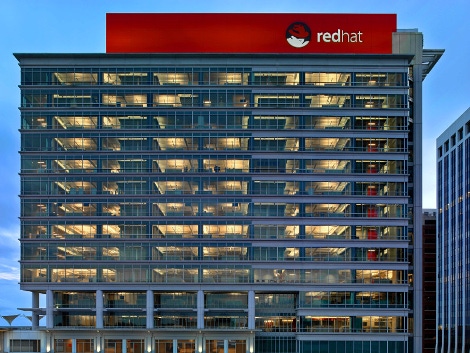Red Hat Shoots to Solve Container Storage with Gluster and OpenShiftRed Hat Shoots to Solve Container Storage with Gluster and OpenShift
Will combine Gluster with OpenShift to deliver open source scale-out storage for Docker containers


By The VAR Guy
Red Hat is the newest organization to take a stab at the persistent storage challenge for containers. Last month, the open source giant announced a new Gluster-based storage option for OpenShift, the company's open source platform for running containerized apps.
Gluster and OpenShift are two key parts of the Red Hat technology stack. Gluster provides open source distributed storage, while OpenShift offers an integrated, one-stop platform for deploying and managing containers using Docker and Kubernetes.
Previously, Gluster and OpenShift were separate entities. But that changed with the announcement that Red Hat will make Gluster available as a storage option on OpenShift.
The Container Storage Holy Grail?
The integration translates to another option for storing data inside containers. That's important because, to date, other persistent storage solutions for containers have tended to be clunky.
Here's why: Docker containers are ephemeral. They spin up and down as needed, which is what makes containerized infrastructure so scalable and agile. But it also makes it hard to store data persistently, since you can't store permanent data inside containers very effectively if the containers themselves are not permanent.
Previous attempts to solve this conundrum have centered on creating special containers dedicated to storage, or allowing containerized apps to access storage on the host system. The former approach is not highly persistent, and the latter undercuts the isolation of containerized apps, which is one of their selling points.
Red Hat is taking a more innovative approach. It will allow containers to access a persistent distributed storage system through Gluster. That means the data will have a permanent place to live even as the containers using it spin up and down. In addition, access to the data won't require containers to access local storage on the host.
Echoes of Torus
If this idea sounds familiar, it's probably because it's similar to what CoreOS is trying to do with its new Torus distributed storage system. But whereas Torus is brand-new and still being developed, Gluster has already been in production for years.
So Red Hat is in the enviable position of being able to offer a persistent storage solution for containers that is both more elegant than previous options, and ready to use now -- or later this summer, at least, which is when Red Hat says Gluster on OpenShift will become available.
This first ran at http://thevarguy.com/open-source-application-software-companies/red-hat-shoots-solve-container-storage-gluster-and-opensh
About the Author
You May Also Like









